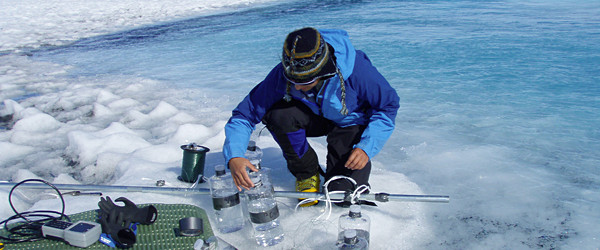Using Nereus for Science
Scientists plan to use Nereus in a variety of ways, primarily to study to some of Earth’s trickiest locations—the deepest ocean trenches, and eventually, under Arctic ice. Once there, they plan to carefully map, photograph, and explore these regions; until now, technological limitations have made quick, short explorations to these hard-to-reach areas the norm. Scientists also want to take samples of deep-sea chemicals, minerals, fluids, and even living organisms, to expand the limits of what we know about life on Earth.
What scientists say about Nereus
“Scientists want to investigate the evolution and diversity of life and how species adapt to live in a range of extreme environments. On its maiden voyage, Nereus will explore the previously inaccessible, deepest reaches of the Earth to search for novel species, new adaptations, and new habitats.”—Biologist Tim Shank, Woods Hole Oceanographic Institution
"By studying deep ocean trenches, we will gain new perspectives on the fluids and chemicals that exist in these unexplored areas of the ocean. These still-unknown fluids and chemicals, and the biological communities that may thrive on them, will create exciting new arenas for research."
—Geologist Dan Fornari, Woods Hole Oceanographic Institution
“Nereus offers a new way to be able to investigate in very deep waters and under ice-covered oceans. Developing these capabilities will be important for oceanographers, and for NASA scientists as they plan future explorations for life on other ocean-bearing planets.”
—Geochemist Chris German, Chief Scientist for Deep Submergence, Woods Hole Oceanographic Institution
"We will be using Nereus to prospect for hydrothermal vents on a short (100 km), deep (>5000 m) and isolated segment of mid-ocean ridge in the Caribbean Sea. Two features make Nereus particularly superb for this effort: Nereus can be deployed from a relatively small ship, which adds flexibility and reduces costs, and Nereus allows us to undertake efficient water column surveys in the AUV mode and then to sample strategically, based on the water survey data. For biologists, having samples in hand, not just photographs, means we have material for a battery of analytical studies that help us understand who the organisms are and that can yield great insight into the biology and ecology of the system. Nereus gives us in one vehicle the heart and soul of deep-sea exploration and discovery."
—Biologist Cindy Lee Van Dover, Director, Duke University Marine Laboratory
Advantages of Nereus?
- Nereus will be one of the only vehicles capable of reaching the seafloor in all the world’s oceans.
- Operating Nereus requires fewer support personnel than other vehicles. This reduces research costs and allows the vehicle to work from smaller, less expensive research vessels.
- Nereus’s unique fiber-optic tether could allow operation where conventional deep-sea vehicles cannot go, such as ice-covered oceans.










 Facebook
Facebook Twitter
Twitter Instagram
Instagram Vimeo
Vimeo YouTube
YouTube LinkedIn
LinkedIn RSS Feeds
RSS Feeds







